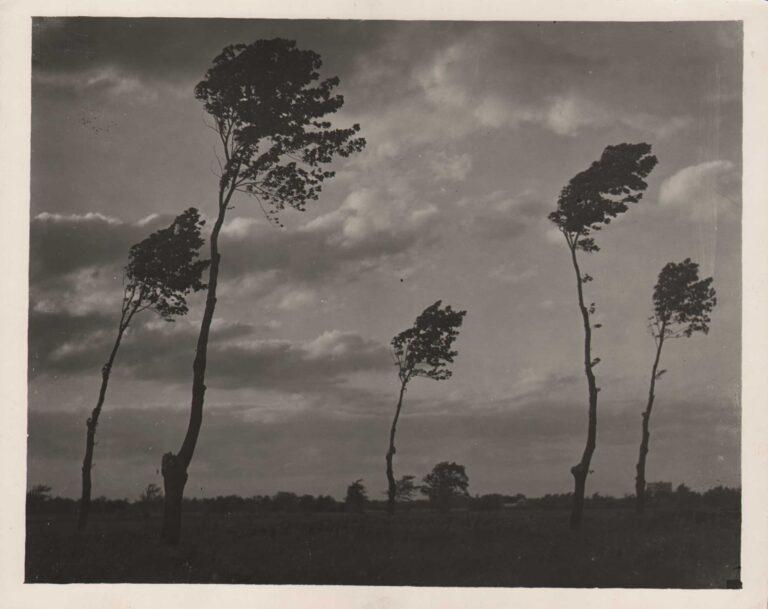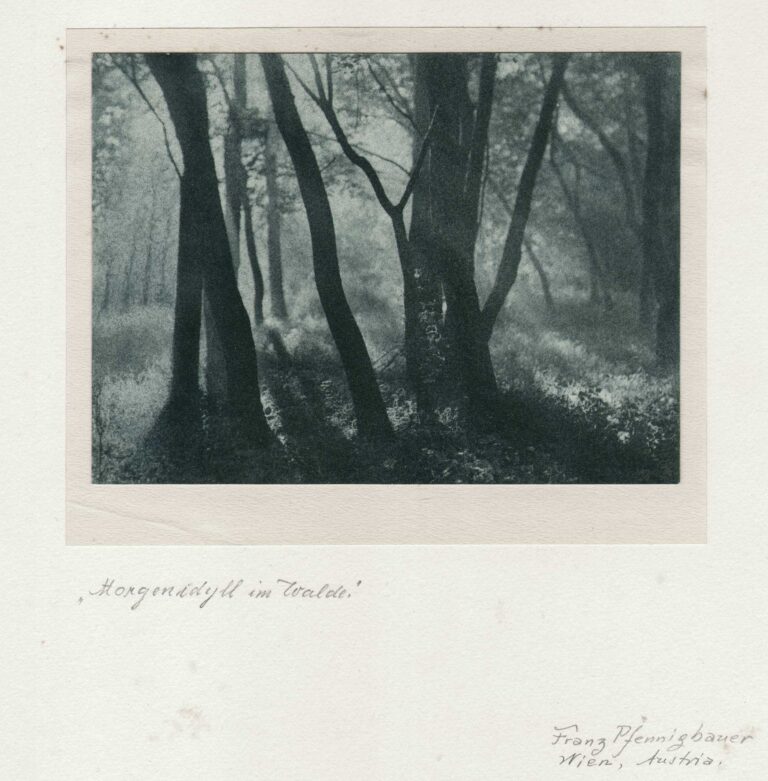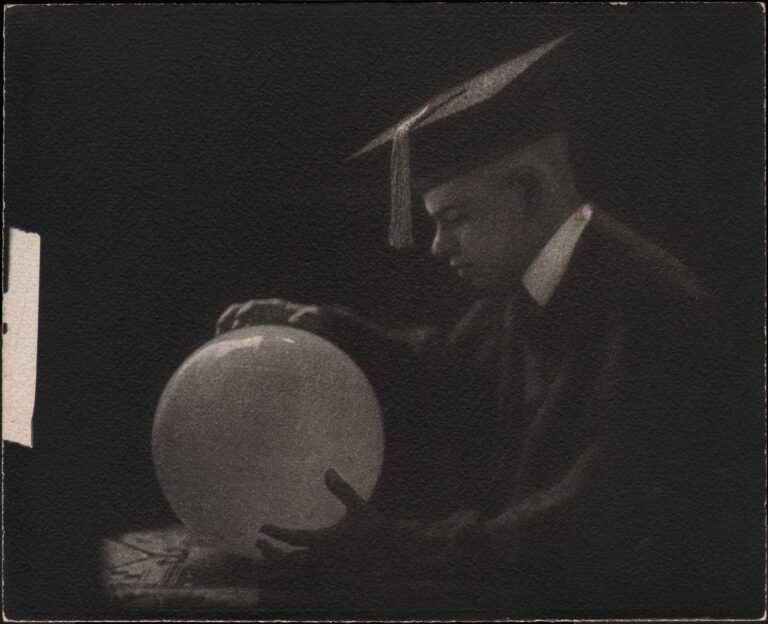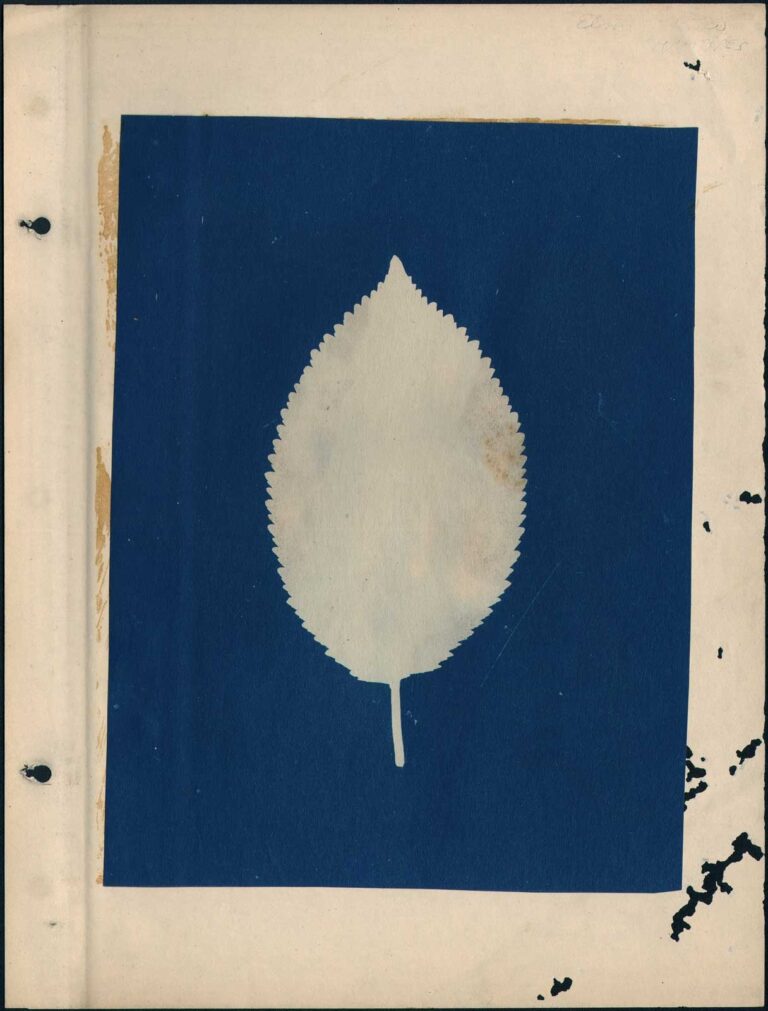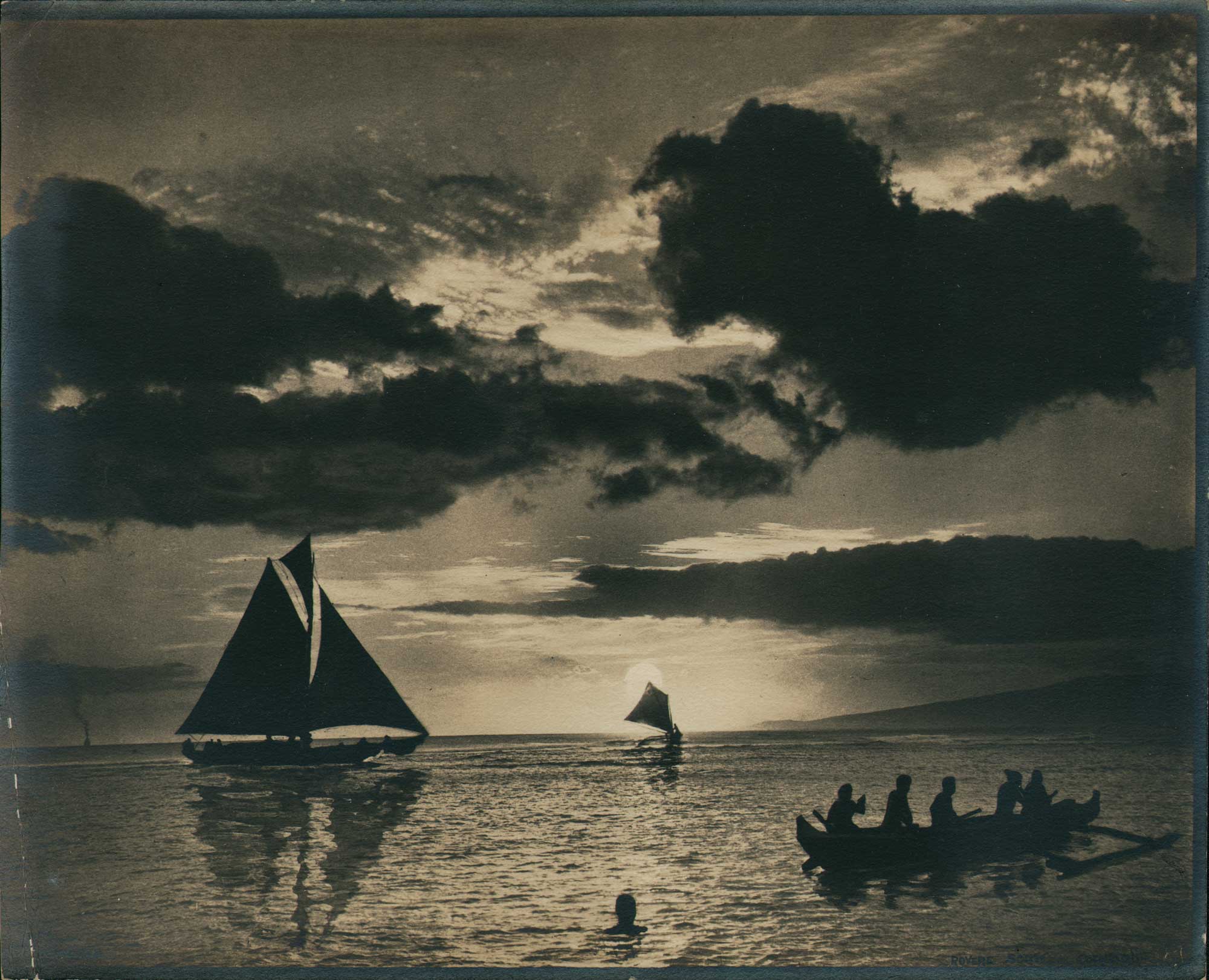
Honolulu, Hawaii
Taken on the Honolulu shoreline on the Hawaiian island of Oahu, five elements have been employed and or combined to create this dramatic composition by photographer Rovere Scott. From left to right: a distant steamer ship on the horizon belches smoke from its stacks skyward; a large sailing ship-going at a good clip while belying the mostly calm waters surrounding it; a single outrigger canoe- its skipper tilting against a setting Sun; the swimmer at center foreground-head above water in taking in the entire scene; and a traditional Hawaiian outrigger canoe- its occupants preparing to paddle off into open water.
While enhancing the overhead clouds (or perhaps combining them from a different negative) to give this sunset photo the added kick of impending darkness, Scott’s manipulation of the original negative in the darkroom (“burning in the negative” using hand manipulations to make the print) makes for an ultimate souvenir postcard view.
Robert Vere Scott: 1877-1944
Robert Vere Scott (1877-1944~) was born in Brisbane, Australia. From early 1900 Scott was based in Port Pirie, running a photography studio, and traveling further afield on photographic missions; he was active in Victoria around 1903-1906. Scott and his family moved to Kalgoorlie in 1907, his photographs of sporting events and community life appearing regularly in the local press. The Scott family left Australia in 1918, for California to join his brothers, with Scott continuing his photographic career in San Francisco under the name Rovere Scott. In 1924 he briefly returned to Sydney where another brother lived, then returned to San Francisco. In his final years he lived and worked in Boston. – University of Washington Libraries biography for the artist.
Gael Newton, Australian art historian and curator specializing in surveys and studies of photography across the Asia-Pacific region, has done extensive research on Scott, determining his most important work utilized the panoramic process.
